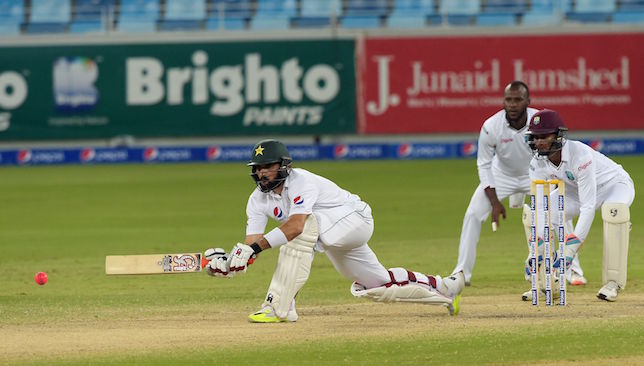
In August this year, the ICC’s plans to reinvigorate Test cricket and try and save it from the dwindling crowds that plague the game outside of England, Australia and India were entering their second phase.
Dubai was chosen to host the second day-night Test in history; the Ring of Fire rightly seen as the perfect venue to aid visibility with its unrivalled lighting system. It was an exciting time for Test cricket, but the issues the sport faces have this week been as glaring as those 365 lights that surround the tip of the Dubai stadium.
Once again, supporters have barely turned out despite the spectacle of day-night cricket, accommodating timings and the intrigue surrounding the pink Kookaburra. But not one of them can be seen as a success when this Test is added to the evidence accrued from last year’s inaugural day-nighter.
That match in Adelaide between Australia and New Zealand was an unmitigated triumph for the new format as 123,736 fans passed through the gates across three days. Here, approximately 5,700 have moved in and out of the Dubai International Stadium as neither the concept or quality of cricket has captured the imagination of the general public.
You can hardly blame them. A desperately flat track paired with a West Indies side, who have struggled across three of the four days, and initial Pakistan dominance has taken the contest out of much of the spectacle.
That the pink ball has failed to bring swing into play also hasn’t helped matters. For any punter watching the first two days there was little to draw you to watch it on TV, let alone part with cash to watch it in the stadium, despite the brilliance of Azhar Ali’s triple century.
Wasim Akram "Day night Test matches shouldn’t be held in future where there is a dew factor involved” #Cricket #PakvWI
— Saj Sadiq (@Saj_PakPassion) October 16, 2016
You can dress up Test cricket all you like, paint it pink and play at family friendly times, but if there is no balance between bat and ball or any sign of an even fight, then you will struggle to break new markets.
The UAE will once again be painted as an unsuitable host in terms of tempting people to the stadiums but the fact the West Indies have been the opposition has not helped. Had this been played during the England series last winter, you imagine more people would have turned out. Pakistan fans would have had the chance to watch their team truly tested while the large British expat community would have had the opportunity to make it down after working hours.
Moving forward, the ball will come under scrutiny, having repeatedly been taken from bowler to umpire due to a loss of shape and softness that has failed to help bowlers magic up anything out of the ordinary.
As is the case with day-night Tests, the ball is still a work in progress and Kookaburra’s representative in Dubai was keen for feedback from this Test to take back to the team of developers. The ICC will also need to canvass opinion and take stock of how to continue with day-night Test cricket moving forward.
It will surely be a hit in other countries and it is the likes of Bangladesh, South Africa and New Zealand where you feel the real difference can be made.
This Test will be remembered for Azhar’s unbeaten 302 and Yasir Shah’s race to 100 Test wickets but, unfortunately, not as fondly as an audition for cricket’s revolution.
It does, however, provide a valuable variable in day-night Test cricket’s minuscule sample size which, at this stage of its existence is crucial to ensure future ventures are more successful.